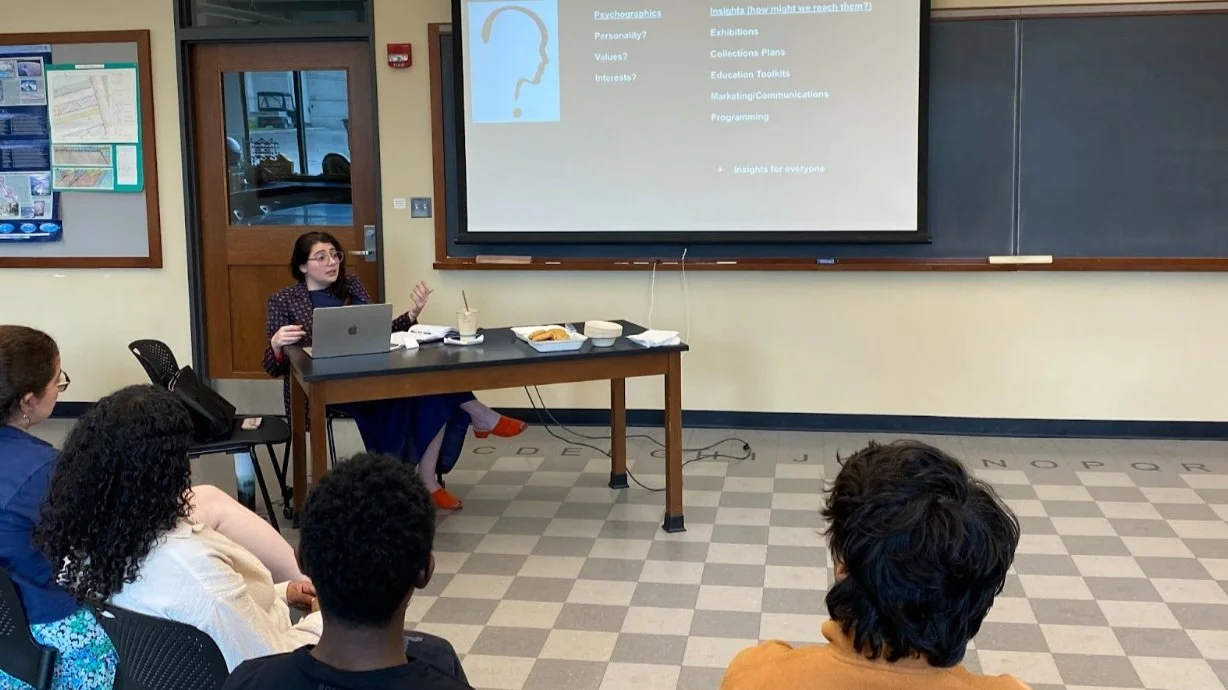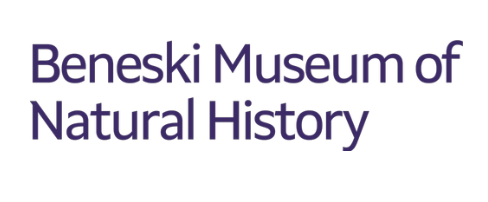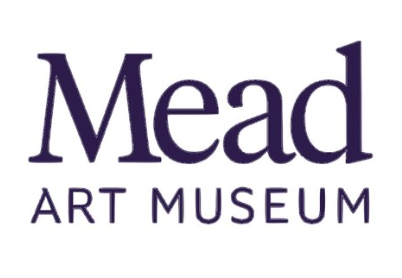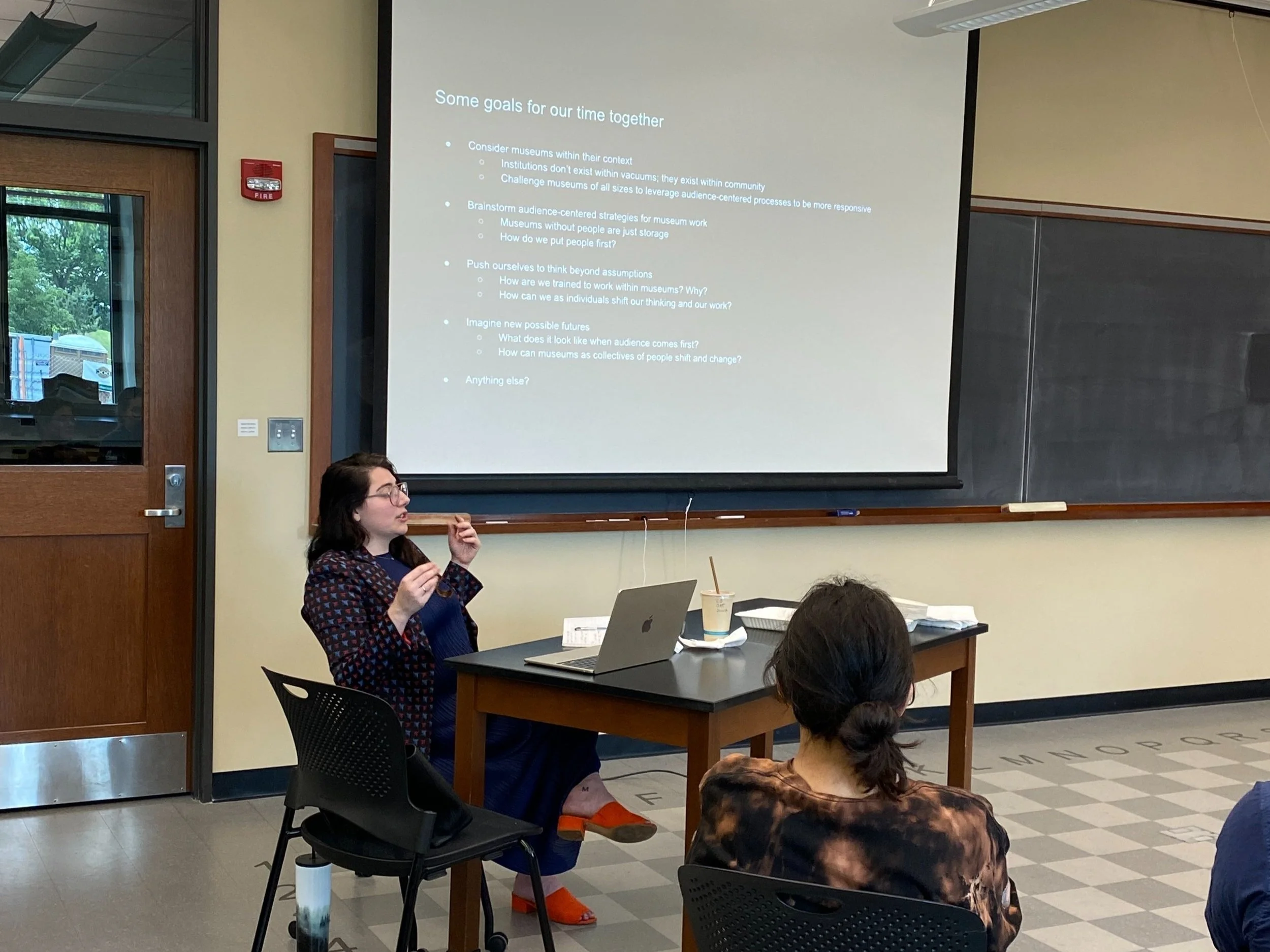Building Audience-Focused Strategies for Emerging Museum Professionals
Arts Equity Group guided emerging museum professionals at the Amherst College Museums to center audience needs throughout their practice, reshaping the future of museum engagement and community building.
Danielle Amodeo facilitating “Understanding Audience” Workshop for Amherst College Museums’ Summer Internship Program.
Project Overview
Client
Client Background
Amherst College Museums is a consortium comprising the Beneski Museum of Natural History, Emily Dickinson Museum, and the Mead Art Museum.
The Beneski Museum of Natural History is one of New England’s largest natural history museums, with three floors of exhibitions, more than 1,700 specimens on display, and tens of thousands of specimens available for research.
The Emily Dickinson Museum offers guided tours and events that amplify Dickinson’s revolutionary poetic voice from the place she called home.
The Mead Art Museum houses Amherst College’s extensive art collection, celebrated for its American and European paintings, Mexican ceramics, Tibetan scroll paintings, English paneled room, ancient Assyrian carvings, Russian avant-garde art, West African sculpture and Japanese prints.
Objectives
Amherst College Museums sought Arts Equity Group’s expertise to adjust their approach to audience engagement, community building, and emerging museum professional (EMP) development. The consortium aspired to explore new possibilities and envision a future where their audience’s needs and interests were at the forefront and requested AEG’s help to facilitate a deeper understanding of the museums’ roles within its community context and adopt audience-centered processes in all facets of their work.
Challenges
Amherst College Museums faced varied and unique challenges:
Varying Collections, Missions, & Staff: Under the umbrella of Amherst College Museums, Beneski, Emily Dickinson, and the Mead have built a shared summer internship program, which collectively trains and supports emerging museum professionals (EMPs) across disciplines. However, each museum is a distinct organization with unique collections, missions, and staff.
College vs. Community Museums: Each museum faced the challenge of navigating their relationship with the College. While some see their institutions as integral parts of the broader community, others believe the museums are College resources designed to prioritize faculty and student engagement. Museum leadership recognized the need to shift perspective and understand how museums play multifaceted roles in connecting with diverse audiences on the College campus and beyond.
Emerging Museum Professionals: Emerging Museum Professionals are students who are primarily responsible for stewarding an audience-first approach to museum work within Amherst College Museums, and they often face the challenge of managing and convincing colleagues of their audience-focused approach.
Our Offerings
-
AEG charted a course that was generalized enough to support three very unique institutions, but also specific enough to have real impact. This culminated in a comprehensive museum curriculum designed by AEG that would teach twelve Amherst College EMPs core concepts related to audience engagement and strategies for introducing these concepts to others to enact systemic change within their institutions. The result was a transformative Understanding Audience Workshop that:
Emphasized the importance of leveraging audience research to create data-driven strategies.
Instilled audience-focused thinking, with comprehensive practices.
Cultivated a people-first museum mindset, fostering audience-centered approaches to collections, curatorial, education, and programming.
Shifted museum perspectives from standalone entities to community integration.
Connected with diverse audiences by leveraging the museum's multifaceted roles.
Enhanced responsiveness and inclusivity for families, kids, and college students.
Danielle Amodeo facilitating “Understanding Audience” Workshop for Amherst College Museums’ Summer Internship Program.
Impact and Outcomes
By focusing on audience, AEG successfully designed a specific yet all-encompassing curriculum that allowed the Amherst Museum consortium to reach their maximum impact.
AEG facilitated insightful discussions on how museums contribute to their communities and stressed the importance of designing teams and initiatives based on audience interests and needs. We encouraged the attendees to envision a transformed museum where audience-centered strategies were already implemented, allowing them to break free from traditional assumptions and embrace new possibilities.
Conclusion
Arts Equity Group’s tailored approach successfully addressed the unique challenges faced by Amherst College Museums. By providing a comprehensive curriculum and workshop for EMPs, AEG empowered these individuals to adopt and advocate for audience-centered strategies. This initiative fostered a deeper understanding of the diverse roles museums play within their community context and emphasized the importance of immersing audience needs in all facets of museum work. The resulting shift in perspective helped position the museums as integral parts of both the college and the broader Amherst community, paving the way for sustained engagement and impactful programming.
Testimonials:






